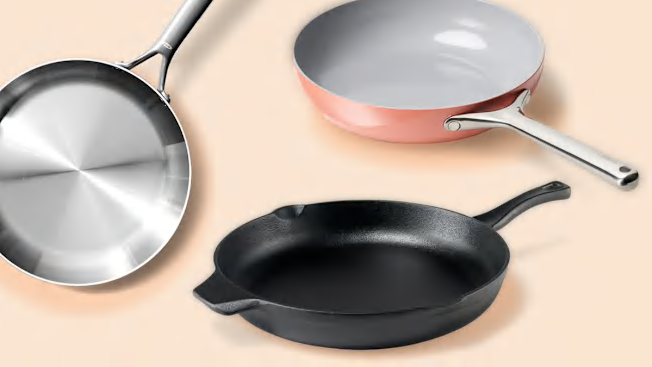Guide to Nonstick vs. Traditional Bakeware: Choosing the Right Tools for Baking

Choosing the right bakeware can make or break your baking experience. At Delights Bakery, we’re passionate about equipping you with the best baking essentials to achieve perfect results. Whether you’re baking cakes, cookies, or breads, the debate between nonstick bakeware and traditional bakeware is key to understanding which tools suit your needs. In this guide, we’ll compare the pros, cons, and best uses of each, along with tips to help you decide. Let’s dive into this bakeware comparison and find the perfect baking tools for your kitchen!
What Is Nonstick Bakeware?
Nonstick bakeware is coated with materials like Teflon, ceramic, or silicone to prevent food from sticking, making release and cleanup easier. Common types include:
- Teflon-Coated Pans: Affordable, widely used, and effective for most baking tasks.
- Ceramic-Coated Pans: Eco-friendly, non-toxic, and resistant to scratches.
- Silicone Bakeware: Flexible, lightweight, and ideal for molds or intricate shapes.
What Is Traditional Bakeware?
Traditional bakeware includes uncoated materials like aluminum, stainless steel, or glass, often requiring greasing or parchment paper. Common types include:
- Aluminum Pans: Lightweight, excellent heat conductors, and durable.
- Stainless Steel: Heavy-duty, resistant to rust, but slower to heat.
- Glass or Ceramic: Ideal for casseroles and even baking, but heavier and prone to thermal shock.
Pros and Cons of Nonstick Bakeware
Pros:
- Easy Release: Baked goods slide out effortlessly, reducing breakage.
- Quick Cleanup: Minimal sticking means less scrubbing.
- Less Greasing: Often requires little to no butter or oil.
- Versatile: Great for sticky recipes like brownies or caramel cakes.
Cons:
- Durability Issues: Coatings can scratch or wear over time.
- Heat Sensitivity: Some nonstick coatings degrade at high temperatures (above 500°F).
- Health Concerns: Older Teflon coatings may release fumes if overheated; choose PFOA-free options.
- Uneven Browning: May not brown as well as traditional bakeware.
Pros and Cons of Traditional Bakeware
Pros:
- Superior Browning: Promotes crisp, golden crusts, ideal for breads and cookies.
- Long-Lasting: Durable materials like aluminum and stainless steel resist wear.
- High Heat Tolerance: Suitable for high-temperature baking or broiling.
- Versatile Use: Can double as cookware for roasting or stovetop tasks.
Cons:
- Sticking Issues: Requires greasing or parchment to prevent sticking.
- More Cleanup: Stuck-on food can be harder to clean.
- Heavier Weight: Metal or glass pans are less portable than nonstick.
- Thermal Shock Risk: Glass and ceramic can crack if moved from hot to cold surfaces.
When to Choose Nonstick or Traditional?
Selecting the right bakeware depends on your baking needs:
- Choose Nonstick For:
- Sticky or delicate recipes (e.g., muffins, cheesecakes).
- Quick cleanup and minimal prep.
- Beginner bakers or small kitchens.
- Intricate molds for chocolates or shaped cakes.
- Choose Traditional For:
- Breads, cookies, or pastries needing crisp, golden crusts.
- High-temperature baking (e.g., sourdough, pizza).
- Long-term durability and multi-purpose use.
- Recipes where browning is critical (e.g., pie crusts).
Tips for Using Nonstick Bakeware
Maximize the performance of your nonstick bakeware:
- Avoid Metal Utensils: Use silicone or wooden tools to prevent scratching.
- Hand-Wash Gently: Dishwashers can degrade coatings; use mild soap and soft sponges.
- Light Greasing: A thin layer of oil or butter can extend coating life.
- Check Temperature Limits: Avoid high heat (above 500°F) to preserve coatings.
- Store Carefully: Stack with protective layers to avoid scratches.
Tips for Using Traditional Bakeware
Optimize your traditional bakeware experience:
- Grease Thoroughly: Use butter, oil, or parchment to prevent sticking.
- Preheat Properly: Allow pans to heat evenly for consistent results.
- Use for High Heat: Ideal for recipes requiring a hot oven or broiler.
- Avoid Thermal Shock: Let glass or ceramic pans cool gradually to prevent cracking.
- Season Aluminum: Lightly oil aluminum pans periodically to build a natural nonstick layer.
Common Mistakes to Avoid
- Using Damaged Nonstick Pans: Scratched coatings can release particles; replace if damaged.
- Overheating Nonstick: High temperatures degrade coatings; check manufacturer guidelines.
- Skipping Prep for Traditional: Always grease or line to avoid sticking.
- Mixing Bakeware Types: Different materials heat differently, affecting bake times.
- Ignoring Maintenance: Clean and store properly to extend bakeware life.
Maintenance and Care for Bakeware
Extend the life of your baking tools:
- Clean Immediately: Soak traditional pans to loosen stuck food; hand-wash nonstick gently.
- Avoid Abrasive Cleaners: Use soft sponges to protect surfaces.
- Store Properly: Stack with cloth or paper towels to prevent scratches.
- Inspect Regularly: Replace warped, scratched, or cracked bakeware for safety.
Frequently Asked Questions
Is Nonstick Bakeware Safe?
Yes, modern PFOA-free nonstick coatings are safe when used within temperature limits.
Can I Use Nonstick Pans for High-Heat Baking?
Avoid temperatures above 500°F; traditional bakeware is better for high heat.
How Do I Prevent Sticking in Traditional Bakeware?
Grease thoroughly or use parchment paper; flour dusting helps for cakes.
Which Is More Durable?
Traditional bakeware (e.g., aluminum, stainless steel) typically lasts longer than nonstick.
Explore Our Baking Essentials!Final Thoughts
Choosing between nonstick bakeware and traditional bakeware depends on your baking style, recipes, and priorities. At Delights Bakery, we’re committed to sharing baking essentials that help you succeed in the kitchen. Use this choosing bakeware guide to build your collection, share your bakeware preferences in the comments below, and let us know your favorite baking tips for a chance to feature them!

Comments
Post a Comment